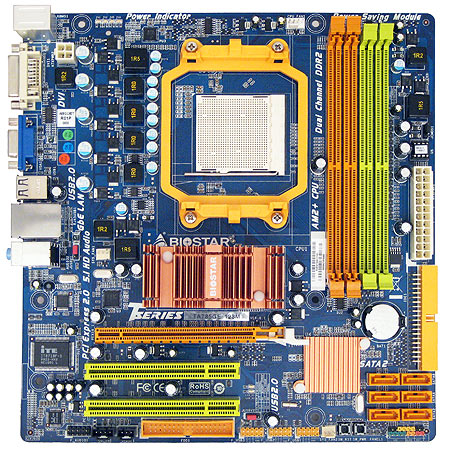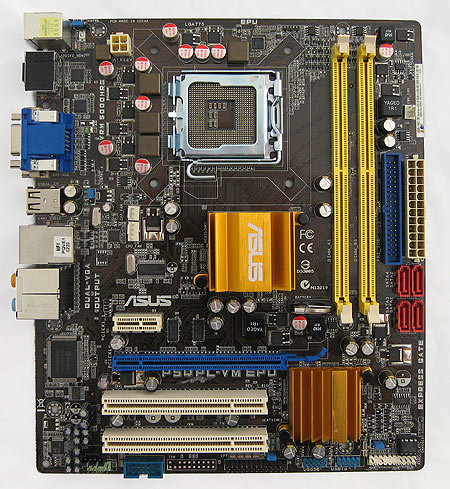AMD Or Intel: Which $100 Gaming CPU Should You Buy?
Test Systems And Benchmark Setup
We'll test all of these systems with a single Radeon HD 4890 graphics card. While this seems a little overkill for a $100 CPU, consider that the Radeon HD 4870 512MB is now as low as $130 online and would make a fine companion to any of these CPUs. The Radeon HD 4890 is merely an overclocked Radeon HD 4870, so the performance numbers we see here today aren't out of the realm of possibility for a budget machine.
In sync with the budget theme is our choice of motherboards. Our upcoming 785G-based board roundup has shown us that the difference between DDR2 and DDR3 memory on the 785G chipset is absolutely insignificant. Therefore, we'll use an AM2+ board with the new 785G chipset to represent the AMD corner because we can use the same DDR2 RAM on the Intel chipset to keep things more fair.
The Intel board sports a G41 chipset. We realize that neither of these platforms is the best-of-the-best. But we're evaluating $100 CPUs here, so we're keeping things realistic for a low-cost build. Budget-friendly boards based on either of these chipsets can be had for as low as $45 online.
The motherboard we're using for the AMD CPUs is the Biostar TA785GE 128M, which you'll see prove itself capable in the aforementioned upcoming 785G story.
In the Intel corner, we'll use Asus' P5QPL-VM EPU based on the Intel G41 chipset, and also featuring support for 1,066 MT/s dual-channel DDR2.
We'll test at two resolutions: 1280x1024 to demonstrate the CPU bottleneck inherent on smaller screens and 1920x1200, to show how these CPUs can handle higher-resolution gaming. We won't use anti-aliasing (AA) or anisotropic filtering (AA) in an effort to keep the focus on CPU, and not graphics card, performance.
One final note before we get started: a lack of available Phenom II X3 710 processors at the time of writing forced us to simulate the performance of this CPU by underclocking a Phenom II X4 945 and disabling one of its four cores. We've proven the validity of this test method in our How Many CPU Cores Do You Need? article.
Get Tom's Hardware's best news and in-depth reviews, straight to your inbox.
| Header Cell - Column 0 | AMD Test System | Intel Test System |
|---|---|---|
| CPU | Athlon II X4 640 (2.6 GHz, No Shared Cache)Phenom II X2 550 BE (3.1 GHz, 6MB L3 Cache)Phenom II X3 710* (2.6 GHz, 6MB L3 Cache)*Phenom II X3 710 simulated with a Phenom II 945by lowering the multiplier and disabling the fourth CPU core | Dual-Core Intel Pentium E6500 (2.93 GHz, 2MB L2 Cache) |
| Motherboard | Biostar TA785GE 128M AMD 785G, BIOS 080015 | ASUS P5QPL-VM EPU Intel G41, BIOS 0407 |
| Networking | Onboard Realtek Gigabit LAN controller | Onboard Realtek Gigabit LAN controller |
| Memory | A-Data Extreme DDR2 800+ 2 x 2,048MB, DDR2-800, CL 5-5-5-18-24 2T at 1.8 V | |
| Graphics | ATI Radeon HD 4890 Reference900 MHz Core, 1GB GDDR5 @ 993 MHz | |
| Hard Drive | Western Digital Caviar Black 640GB 7,200 RPM, 32MB Cache SATA 3.0 Gb/s | |
| Power | ePower EP-1200P10-T21,200 W, ATX 12V, EPS 12v | |
| Software and Drivers | ||
| Operating System | Microsoft Windows Vista Ultimate 64-bit 6.0.6001, SP1 | |
| DirectX version | DirectX 10 | |
| Graphics Drivers | ATI Catalyst 9.8 |
| Benchmark Configuration | |
|---|---|
| 3D Games | |
| Crysis | Patch 1.2.1, DirectX 10, 64-bit executable, benchmark tool, High Quality, No AA |
| Far Cry 2 | Patch 1.02, DirectX 10, in-game benchmark, Ultra High Quality, No AA |
| World In Conflict | Patch 1009, DirectX 10, timedemo, Very High Details, No AA/No AF |
| Tom Clancy's H.A.W.X. | Patch 1.02, DirectX 10.1, in-game benchmark, Highest Settings, No AA |
| Left 4 Dead | Version 1.0.1.4., Custom THG Benchmark, Highest Settings, no AA, no AF |
| Grand Theft Auto IV | Patch 1040, in-game Benchmark, Medium Settings, High Textures |
| Resident Evil 5 | Resident Evil 5 Benchmark Version, Highest Settings, Motion Blur Enabled, no AA, no AF |
| Fallout 3 | Patch 1.4.0.6., Custom THG Benchmark, Ultra High Quality, No AA, No AF |
| Prototype | Version 1.0.0.1., Custom THG Benchmark, High Quality, No AA, No AF |
Current page: Test Systems And Benchmark Setup
Prev Page The Contenders: One Athlon II, Two Phenom IIs, And A Pentium Dual-Core Next Page Synthetic Benchmarks: 3DMark VantageDon Woligroski was a former senior hardware editor for Tom's Hardware. He has covered a wide range of PC hardware topics, including CPUs, GPUs, system building, and emerging technologies.
-
kenjiuchimura It's a shame there aren't more games that run like FO3 considering how gorgeous it is yet still being much more accessible based on its focus of CPU power instead of being topheavy on the GPU side.Reply -
FUtomNOreg If people have a delusion that games are not cpu constrained, it is because, if I recall, an article in Tom's made the assertion that any c2d >3GHz was sufficient.Reply -
curnel_D Don WoligroskiOne final factor we didn't have time to test this time around is overclocking. When overclocked, would the Phenom II 550 Black Edition become a monster? Would the dual-core Pentium E6500 pull a rabbit from its hat? Or would the Athlon II X4 620 and Phenom II X3 710 be able to hold on to their strengths? If this is something you'd like us to explore, please let us know in the comments section.Reply
OC potential is one of the most important factors in an article like this. If you can, most deff post an update soon. -
wintermint AMD is really evening the playing field with their low cost CPU :) but they should start challenging the Core i7 :(Reply -
siliconchampion I would have to say that overclocking results would be extremely useful. May I suggest that you run the same benchmarks again at two levels, the maximum overclock at stock voltage, and again with maximum stable overclock. Then compare the results to today's benches.Reply
I would have to agree with some of the poster's above that overclockability is a key factor in this price segment. -
curnel_D kenjiuchimuraIt's a shame there aren't more games that run like FO3 considering how gorgeous it is yet still being much more accessible based on its focus of CPU power instead of being topheavy on the GPU side.360 ports generally run really smooth on adequite PC hardware, simply because of the archetectual similarities. I personally dont think that FO3's graphic technology is all that great, but the art direction that Bethesda took made it a great looking game.Reply
Another game that does this really well is Operation Flashpoint 2. Technically speaking, the grapics arent that great. And I notice alot of places where textures and polys arent what they should be for a PC game. But aside from that, the game looks fantastic and runs very smooth even at the highest settings, and it all has to do with art, not technology. -
ohim TheCapuletThe Pentium DC can effortlesly overclock to 3.6, giving it a steep clock edge. And under good air cooling can easily hit the 4Ghz mark. With quality air cooling getting so cheap these days, it's not hard to imagine budget gamers buying great cooling while skimping on the processor budget because of overclocking. This article would have been perfect if it included the OC information and a few quick benchies to show the results. The OC potential makes ALL the difference in the world at this price point.First of all OC is out of the question here in this article since a 100$ CPU is clearly not for an enthusiast user (not even i with a PII 940 don`t use OC) , second OC`ing will only lead to huge power consumption fron the pc performance / watt will drop like hell.Reply -
mrsiberia I would love to see what impact OC has... Imo it's always interesting with budget hardware.Reply -
curnel_D wintermintWhich of the 4 CPU listed in the article is more future-proof?The AthalonII X4 would deffinately be the more futureproof of the four. Programs and games are rapidly being developed and upgraded to use 4+ threads. And when threaded applications finally hits mainstream, you'll appriciate those one or two cores a whole lot more. (Not to mention the platform itself lends itself to future upgrades a whole lot better than the 775 platform.)Reply -
tacoslave well amd always pwns on the lower end but what i want to see is them pull out a demon with shiny guns that can gut an i7 clean. then we can start the partying (and new systems)Reply

